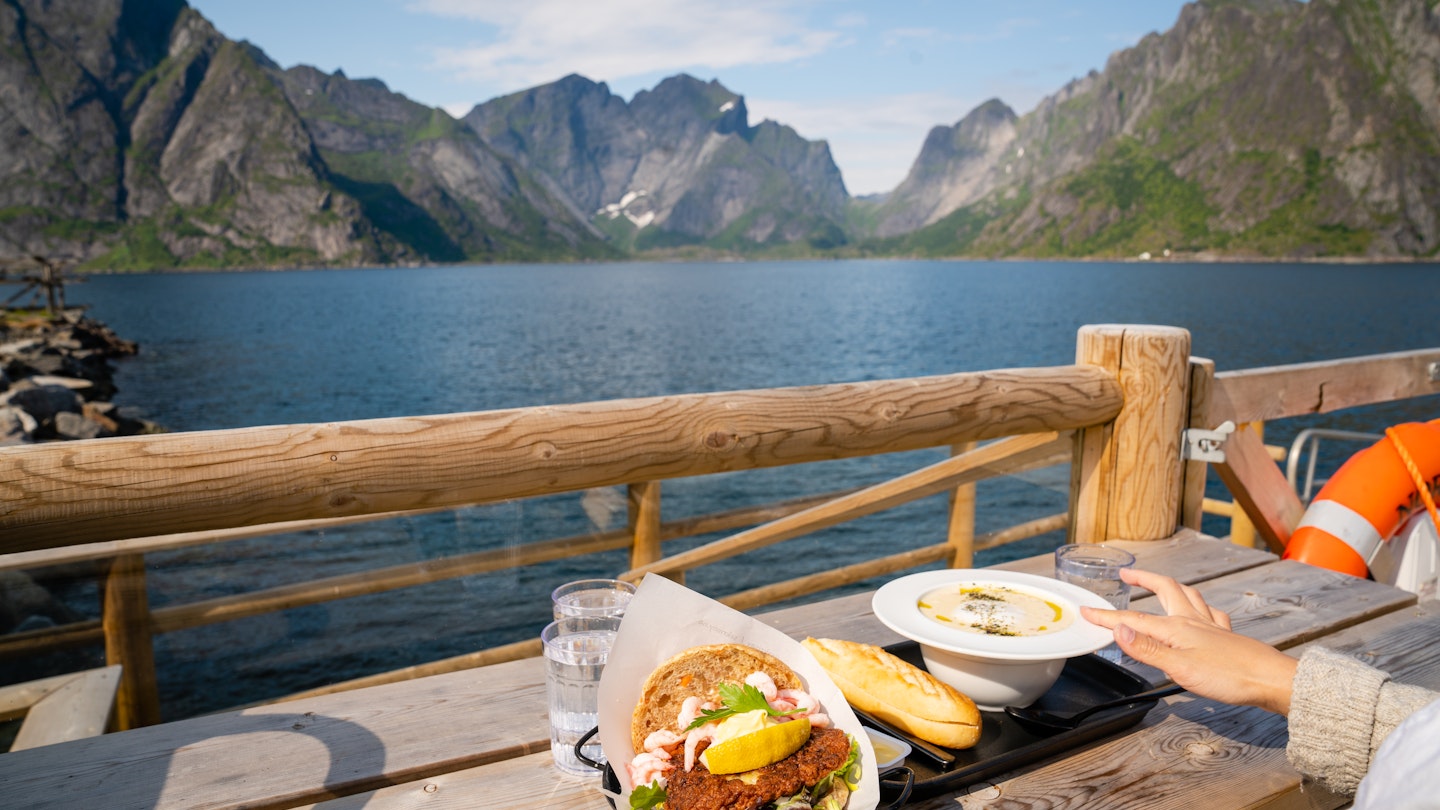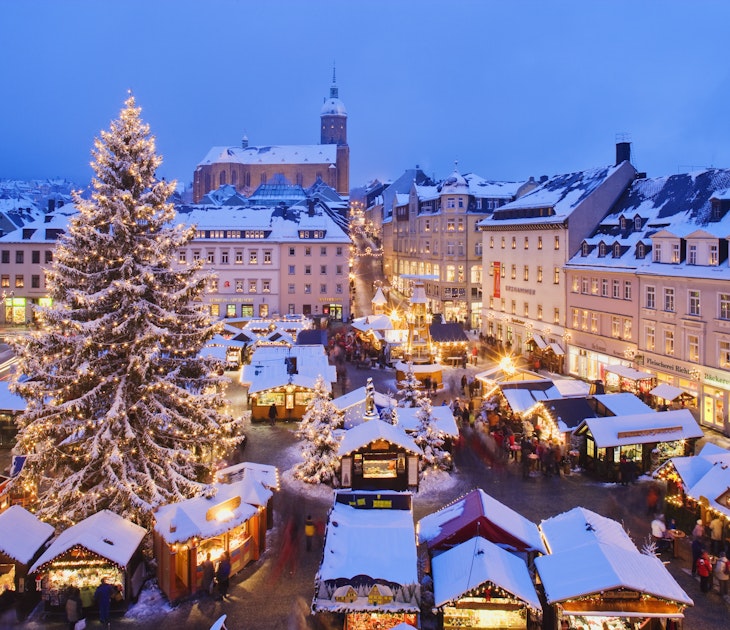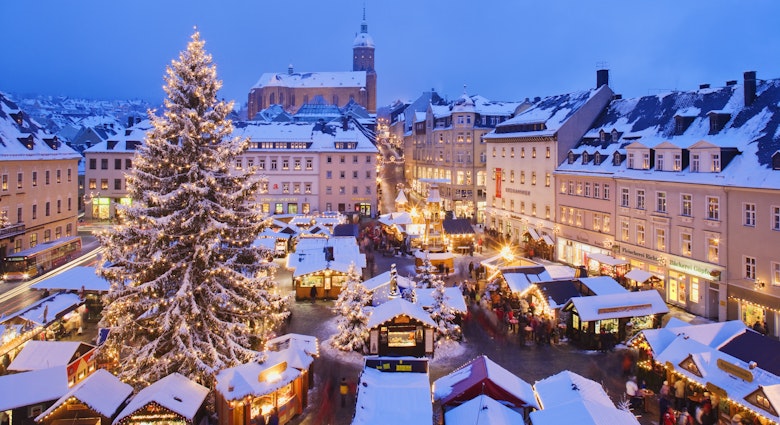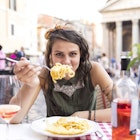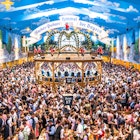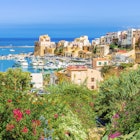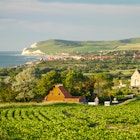Whether they're under-the-radar like Istria, Croatia, or traditionally known for another cuisine entirely, like the Black Forest in Germany, these destinations offer gourmands a chance to discover new cuisines or rediscover traditional favorites that have been reinvented with a new generation of chefs.
Selected from our book, Gourmet Trails Europe, these 10 destinations are perfect for your next delicious adventure.
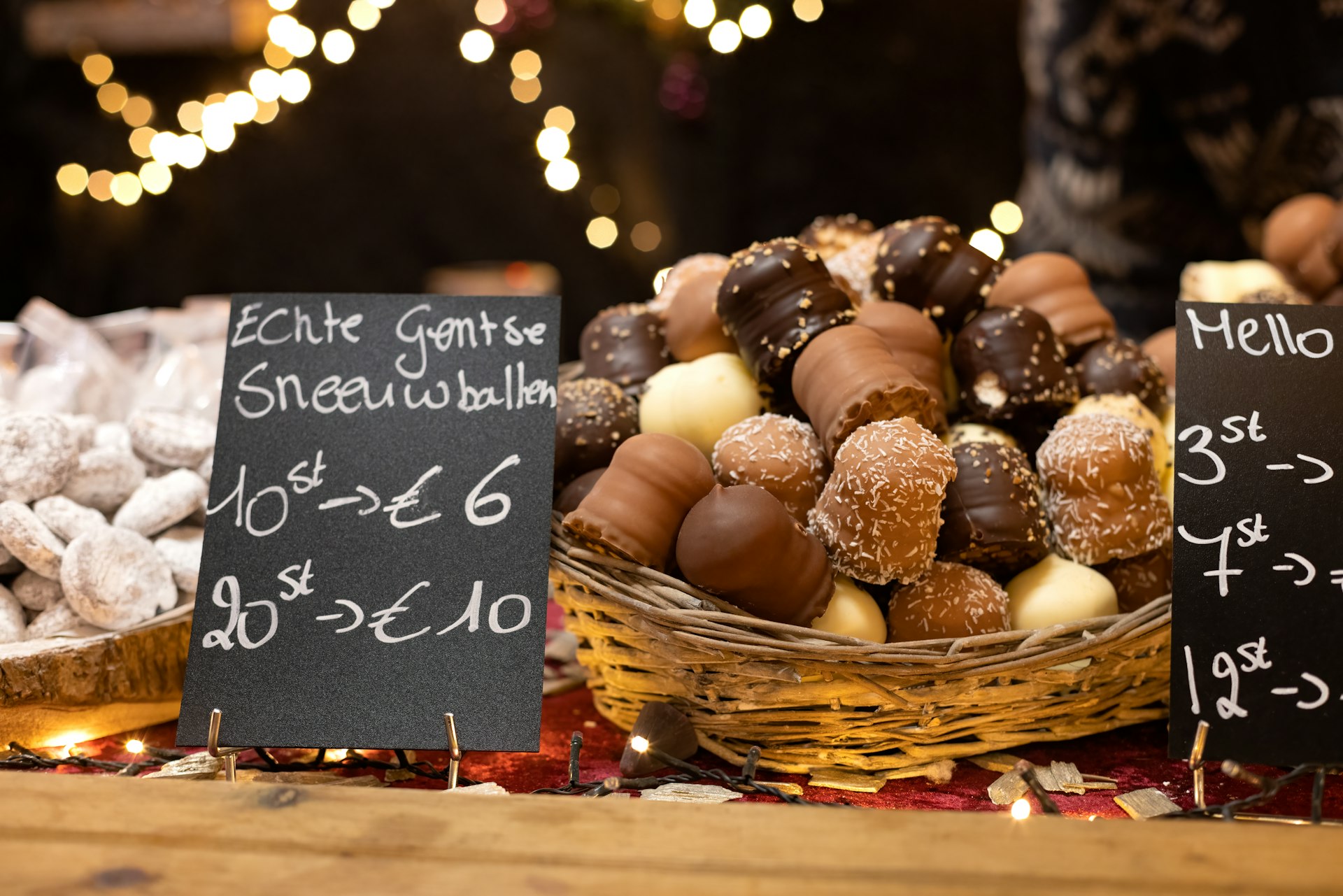
1. Ghent, Belgium
When you think of Belgium, usually the first thing that comes to mind is chocolate. But Ghent, nestled in the heart of the Flemish countryside, is an under-the-radar foodie destination with its quirky restaurants, local food specialties, craft booze and, yes, irresistible chocolates. Behind its medieval exterior is a vibrant, edgy food scene that is focused on local, seasonal, unpretentious food that is also affordable. It’s also an eco-destination, having pioneered the idea of devoting a day each week to vegetarian food.
The active local Food Council runs sustainability initiatives that include the redistribution of restaurant leftovers. Head to the docks for craft beer and barista coffee, but don’t forget to visit one (or more) of the half dozen artisan chocolate makers who give the city its sweet edge.
Where to eat
- Yuzu At Yuzu, the Japanese-inspired artisan chocolatier Nicolas Vanaise creates minimalist chocolate truffles that resemble calligraphy artworks, mixing surprising combinations of flavors and textures, such as lemon and coffee or chili, ginger and corn.
- Publiek Chef Olly Ceulenaere, a high-profile founder of the innovative Flemish Foodies movement, opened the Michelin-starred Publiek to develop his own cuisine based around local, seasonal produce and minimal waste. The six-course tasting menu features dishes such as marinated herrings smothered with baby radishes, fava beans and smoked seaweed.
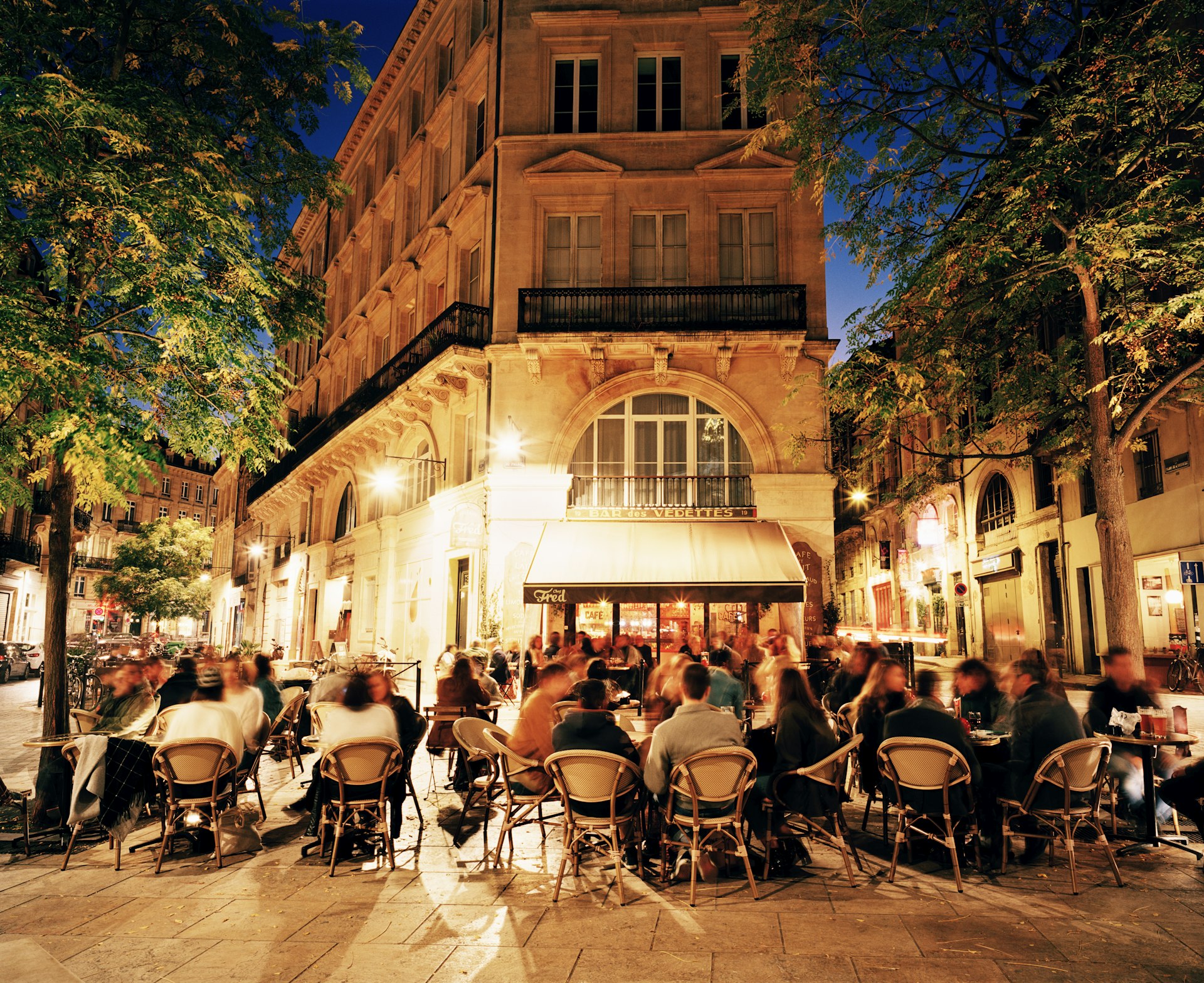
2. Bordeaux, France
While Bordeaux will call to mind images of vineyards and wine tastings, don’t sleep on their energetic culinary scene. From the food markets, bistrots, and even their street foods, there are surprises around every corner. Skip the traditional bistrot fare in favor of one of the North African restaurants where you can feast on couscous and tagines. Wash it all down with a hop between creative caves à vins, wine bars offering delicious tapas-style dishes to complement stellar wine lists.
Much of Bordeaux’s Unesco World Heritage riverside, La Porte de la Lune, dates back to the 18th century when it was one of the world’s busiest ports. While wine was exported from thousands of châteaux and vineyards that surround the city, it was also a port that exported enslaved people – a legacy that is slowly beginning to be acknowledged in the city itself as well as in its food culture. Today, the old docks and wine warehouses have been brought back to life as dramatic housing projects, exhibition centers, music and art venues, food markets and hotels.
Where to eat
- Retro Tour Bordeaux For a more unique way of experiencing the vineyards around Bordeaux, Retro Tours offers vintage sidecar vineyard excursions that are aimed at wine lovers rather than connoisseurs. Travel empty back routes through vineyards, stop at a château for a tasting, and end with a picnic nestled between the grapevines.
- Les Capucins A 1749 iron-and-glass covered market, Les Capucins is a feast for the senses. From foie gras to locally produced Aquitaine caviar, duck confit, and hundreds of cheeses, there’s something for every palate.
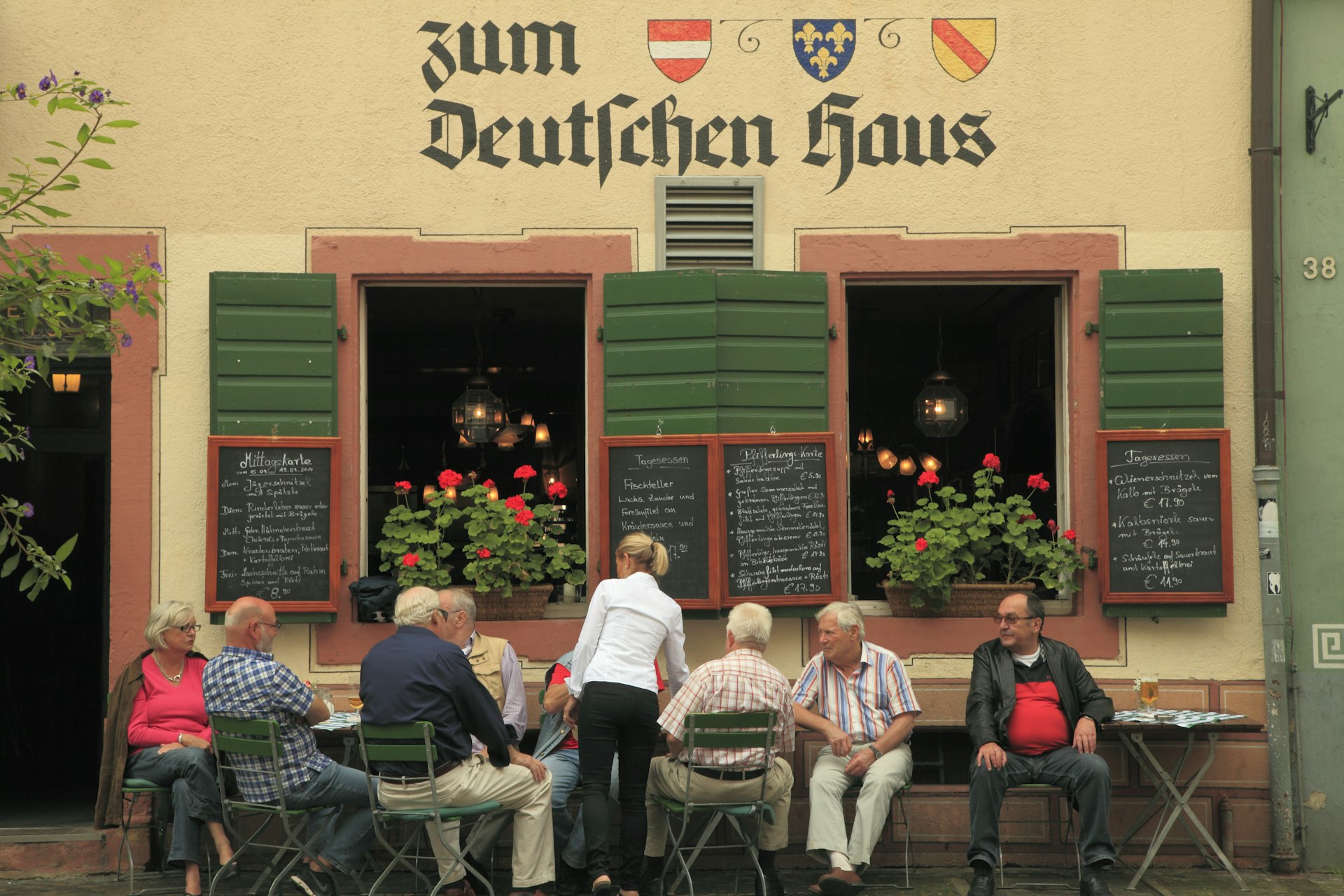
3. Black Forest, Germany
Known for its eponymous Black Forest Cake, this is a region of Germany where the food scene is as deep, dark and rich as its famous cherry cake. Seemingly inspired by the landscape which is straight out of a fairytale with its steep hills, tightly packed valleys, timber-framed buildings, and church steeples that stand tall against the forest trees, the local food culture is steeped in seasonal ingredients. Nose-to-tail and farm-to-plate, organic and locavore, these food practices have been a part of the culture for over a century.
A simple walk down a road will yield a host of local purveyors including small distilleries producing kirsch (cherry brandy), hills dotted with pinot vines, farmhouses offering smoked ham and golden honey for sale, basket-wielding locals foraging in the woods, and a host of farmers markets brimming with an abundance of local produce. It’s the unsung local heroes and inns that are ripe for discovery and carry generations of local culinary history in their dishes. Hearty foods such as maultaschen (giant pasta pockets stuffed with pork and onions) and zwiebelkuchen (onion tart with cream and caraway seeds) will send you rolling out of rural inns where they are served. To cap off a day of culinary delights, sink your fork into a slice of the famous Black Forest gateau.
Where to eat
- Alpirsbacher Klosterbräu Alpirsbacher is now one of the Black Forest’s finest beers, brewed from pure local spring water. Daily guided tours take you through the brewing process and conclude with a beer tasting. The brewery’s eponymous hoppy, full-bodied beer took home the gold at the World Beer Awards in 2020.
- Café Goldene Krone In the southern Black Forest, Café Goldene Krone, a women’s cooperative cafe, bakes up a Black Forest cake that is the stuff of dreams: a multi-layered masterpiece of moist chocolate sponge, tart morello cherries and clouds of whipped cream, with a subtle hint of kirsch.
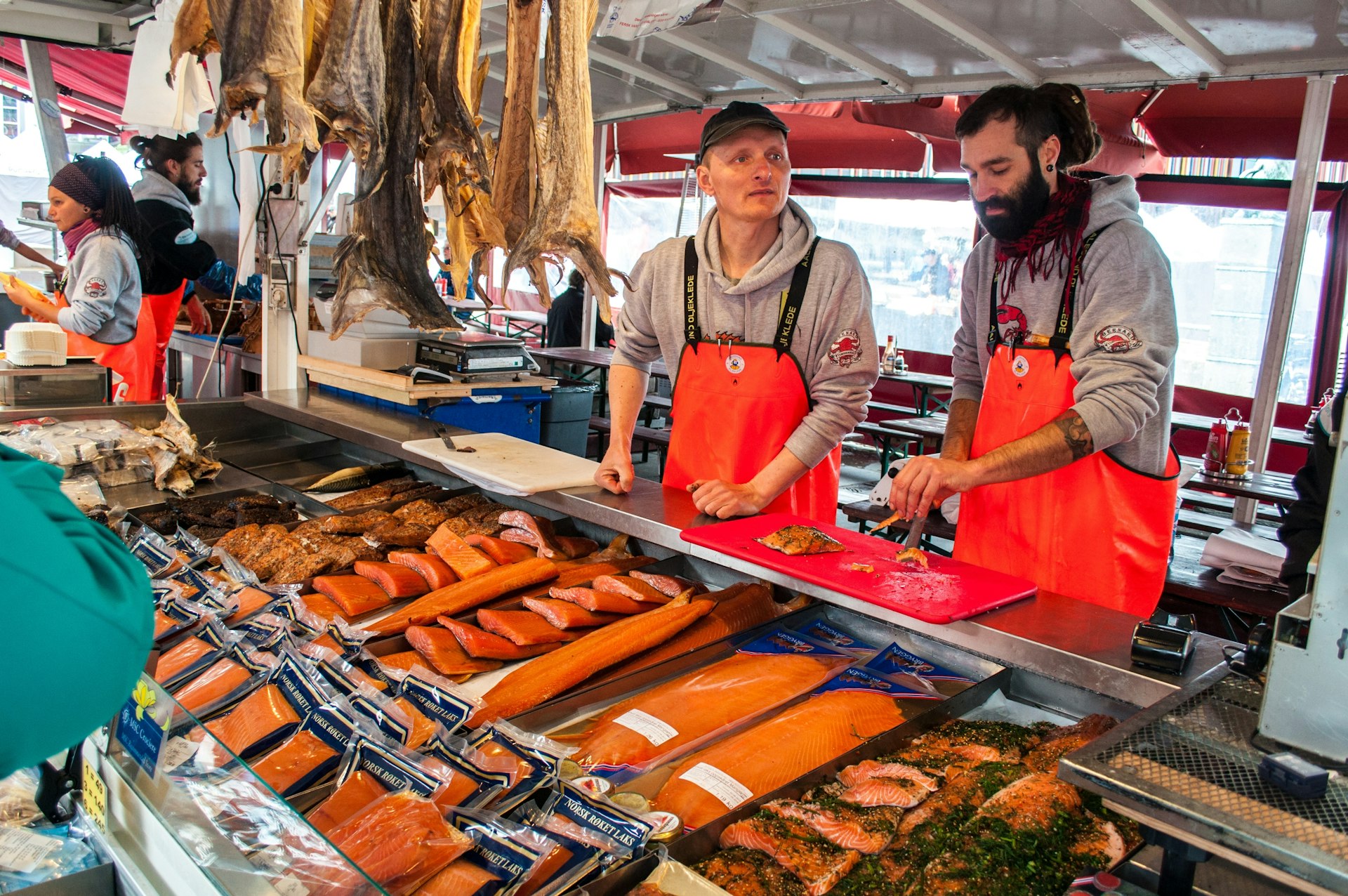
4. Southern Norway
The blue-grey palette of Southern Norway with its deep blue North Sea, duned beaches and rocky fjords, is the perfect backdrop of a culinary region that likes to push the boundaries of food and science while still focusing on sustainability. The area is rich in seafood, game, berries, mushrooms and herbs, which populate the hyperlocal menus of the offbeat restaurants that run the gamut from the world’s largest underwater restaurant to former royal estates, and even a revamped school gym serving up small Nordic dishes. Don’t forget about the pier-side oysters you can slurp down while watching the sunset and meditating on Norway’s connection to the land and the sea that surrounds it.
Where to eat
- Under Five-and-a-half meters below the North Sea you’ll find the glass-fronted dining room of Under. Resembling a sunken periscope in its design, this is a Michelin-starred restaurant where you’ll dine on an 18-course menu full of surprises. Book right now if you’re thinking of heading to the area in six months.
- Smag & Behag In this reinvented 19th-century school gymnasium you'll find the restaurant Smag & Behag. The informal interior sets the scene for small dishes as intricate as they are delicious, like scallops with potato, cucumber, green strawberry and fermented asparagus.

5. Southern Sweden
Follow the summer sunshine around the south of Sweden from Gothenburg to Dalarna to sample the delicacies of the Midsommar event and you’ll see the heart of Sweden. This tradition of marking the longest day of the year dates back to pagan times, but today it’s a time for picnics in the woods with friends and family. Time your trip right (Midsommar is celebrated on the Saturday falling between 20 and 26 June) and you’ll be able to feast between swims in the region’s clear cool lakes, hikes in the immaculate forests, and lazing on the beach. But be sure you like pickled herring because that is the focus of feast time here.
Though smoked salmon and cream-slathered strawberry cake along with snaps, Sweden’s traditional spice-infused firewater, also make an appearance. Midsommar also marks the start of the summer foraging season where you can pick wild bilberries, raspberries and more in the woods. If you miss the June festivities, plan a trip for August, when kräftskiva (crayfish party) season, is in full swing. Gather outside with family and friends to crack into piles of steamy red crayfish.
Where to eat
- Östermalms Saluhall If you want to taste summer, head to Östermalms Saluhall, a sophisticated marketplace filled with stands selling everything from forest-fresh berry juices and Swedish cheeses to Baltic herring, lightly salted and fermented inside a sealed can. This is the place for local seafood, seasonal herbs, and charcuterie.
- Sturehof Upstairs in the Sturegallerian mall you'll find Sturehof, an elegant local restaurant selling whole crayfish boiled with salt, dill and beer. If the traditional boiled way doesn’t strike your fancy, order them stuffed into a satisfying and mouth-watering crayfish sandwich.
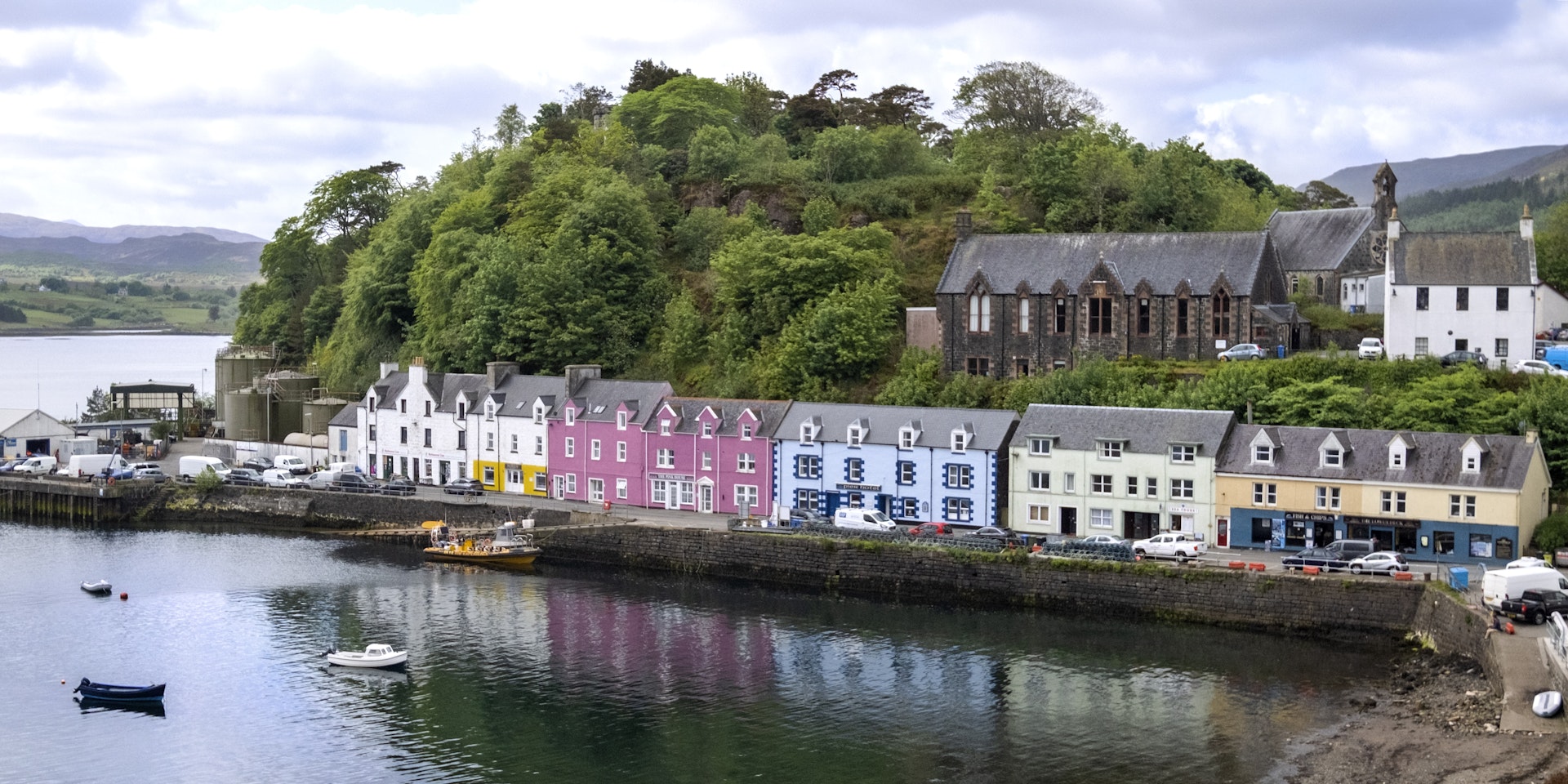
6. Isle of Skye, Scotland
The Hebridean Isle of Skye, located in northwest Scotland, produces some of Scotland’s finest foods, which find their way into the creative dishes of the talented local chefs. Skye is having a culinary moment – and long may it continue. Boasting some of the UK’s clearest seas, make it the perfect spot for hand-dived scallops and oyster farming, two of the area’s top local foods and exports. There’s always been a fine dining undertone in this area, but a newer wave of dining, where sheds, trucks and restaurants are slinging oysters, pizzas and pastries, keep it affordable for locals and tourists alike.
You’ll find many tourists creating their own self-guided food tour where they sample the local delights, including those from distilleries that craft small-batch spirits inspired by the nature around them. Beyond this burgeoning local food destination, this is an enchanting island where dinosaurs once roamed, their footprints still visible at An Corran Beach.
Where to eat
- The Three Chimneys From land, sea and ‘Skye’ the menus are curated with the island’s rich seafood and game. Skye’s bountiful produce is on full display here at The Three Chimneys, so be sure to order Loch Dunvegan crab and the double-dived Sconser scallops.
- Isle of Skye Distillers Isle of Skye Distillers are producing the award-winning Misty Isle gin, which uses fresh water from the Storr Lochs and local Skye botanicals. Check out their Gin School, where you can join expert distillers and concoct your bespoke bottle of gin to take home.
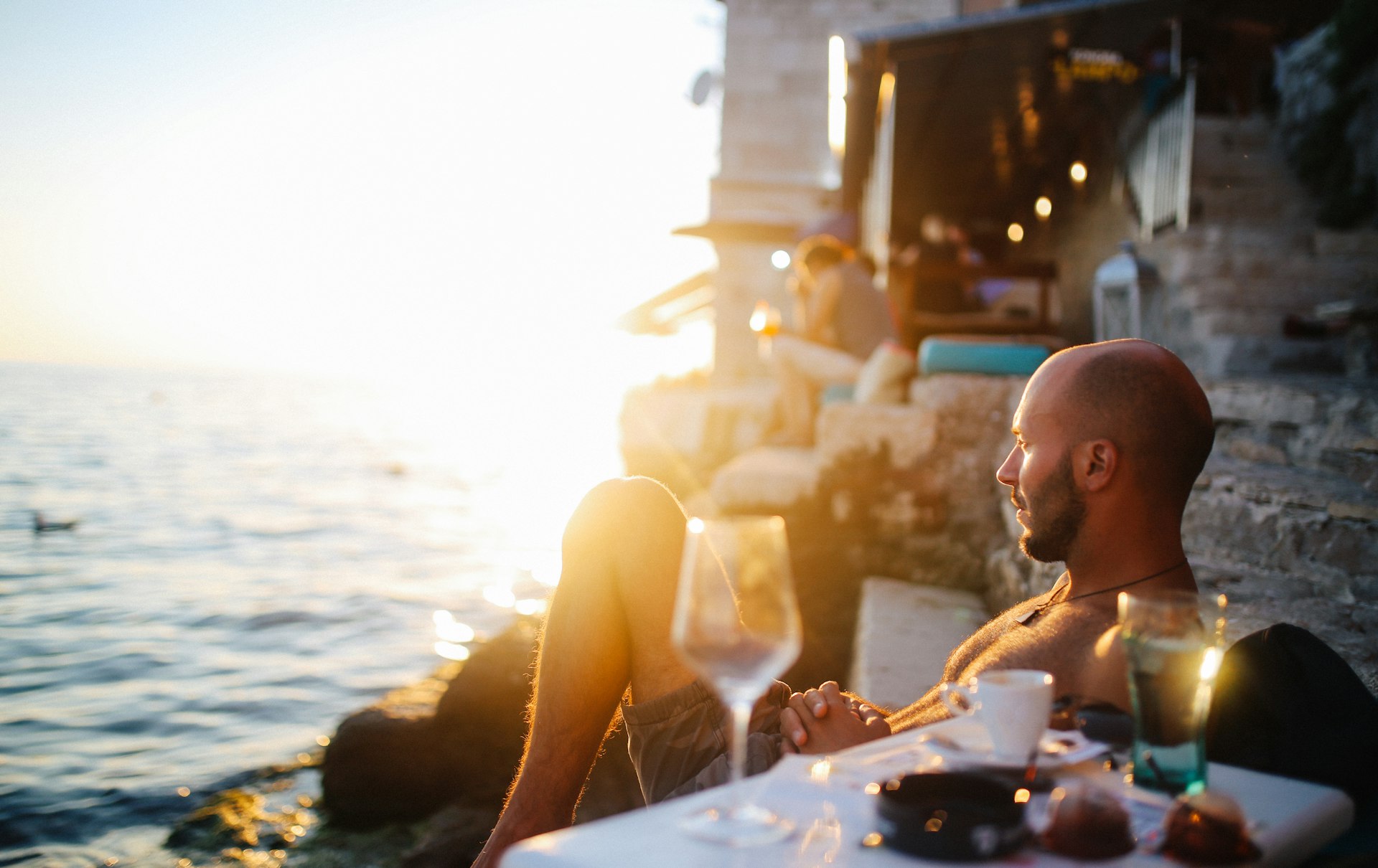
7. Istria, Croatia
From above Istria looks a bit like Venice, with its barrel clay tile roofs that stand out against the blue-green sea of this beautiful peninsula city. Similar to Italy, the regional produce and exports here are wine, olive oil, truffles and cheese. Over the centuries, Istria has kept its local traditions and character, especially around food production, with its family-run farms that are nestled in the rolling hills and ringed by ancient woodlands. Orchards, fields, olive groves and vineyards still dominate here. Stone houses dot the Medieval hilltop villages and are home to gourmet produce shops and restaurants. And the local produce isn’t always alike, the varietals of grapes are different here than in many other wine-producing regions.
Alongside Italy, Istria is the only place in the world where you can find the prized white truffle. If you arrive in autumn, prime truffle-hunting season, you may be able to join trackers and their dogs in the hunt for both white and black truffles. Even if you don’t succeed, you’ll still be rewarded with a truffle dish of some sort on every menu of every restaurant in the area.
Where to eat
- Ipša Owner Irene Ipša and her family offer tours of the olive mill, sharing stories of their family, farming, and the Istrian peninsula. The tour ends with a sampling of Ipša's four oils they produce, enjoyed in a beautifully designed tasting room, or on the terrace beneath the vines.
- Restaurant Zigante The formal Zigante specializes in truffle and is the place to try them in every possible form from shrimp ravioli with truffle to truffle ice cream. Make a whole night of it by booking one of the rooms in their top floor accommodations and start the next morning with a truffle breakfast.

8. Palermo, Sicily, Italy
While technically part of Italy, Sicily is closer to Tunis than Rome. You’ll see nods of that everywhere in Palermo, from its date palms and qubba-topped churches to its souk-like markets, daring street food and brightly colored sweets. This cultural melting pot has shaped one of Italy’s most unique cuisines, a sweet-and-sour fusion in which pasta, couscous, and fresh local seafood are infused with almonds, pistachios, pine nuts, and studded with the bounty of vegetables and citrus fruits grown in the local soil.
The real Palermo food experiences here are found in unexpected places: retro backstreet trattorias, markets, convent kitchens, and even private palazzos. It’s a great street-food city where you can find friggitorie (fried-food vendors), street-corner carts and old vans peddling arancini (fried rice balls), panelle (chickpea fritters) and sfincione (Sicilian focaccia). Just leave room for the city’s mouth-watering sweets: ricotta-filled cannoli, cassata and frutta martorana (fruit-or veg-shaped marzipan sweets). You’ll want to try them all.
Where to eat
- Cooking with the Duchess Cooking with the Duchess will have you whipping up a meal in the palace in which Giuseppe Tomasi di Lampedusa wrote one of Italy’s great modern novels, Il Gattopardo (The Leopard). The classes are run by the writer’s daughter-in-law, the Duchess Nicoletta Polo Lanza Tomasi, who cooks a multi-course Sicilian feast with her students and shares stories as they dine together in the 18th-century seafront palazzo.
- I Segreti del Chiostro The kitchen of the 15th-century Dominican convent I Segreti del Chiostro has revived historic desserts like couscous dolce (semolina couscous with almonds, pistachios, walnuts, candied fruit and chocolate) and fedde del cancelliere (shell-shaped marzipan filled with apricot jam and cream). Arrive early and don't leave without one of their heavenly cannolis.
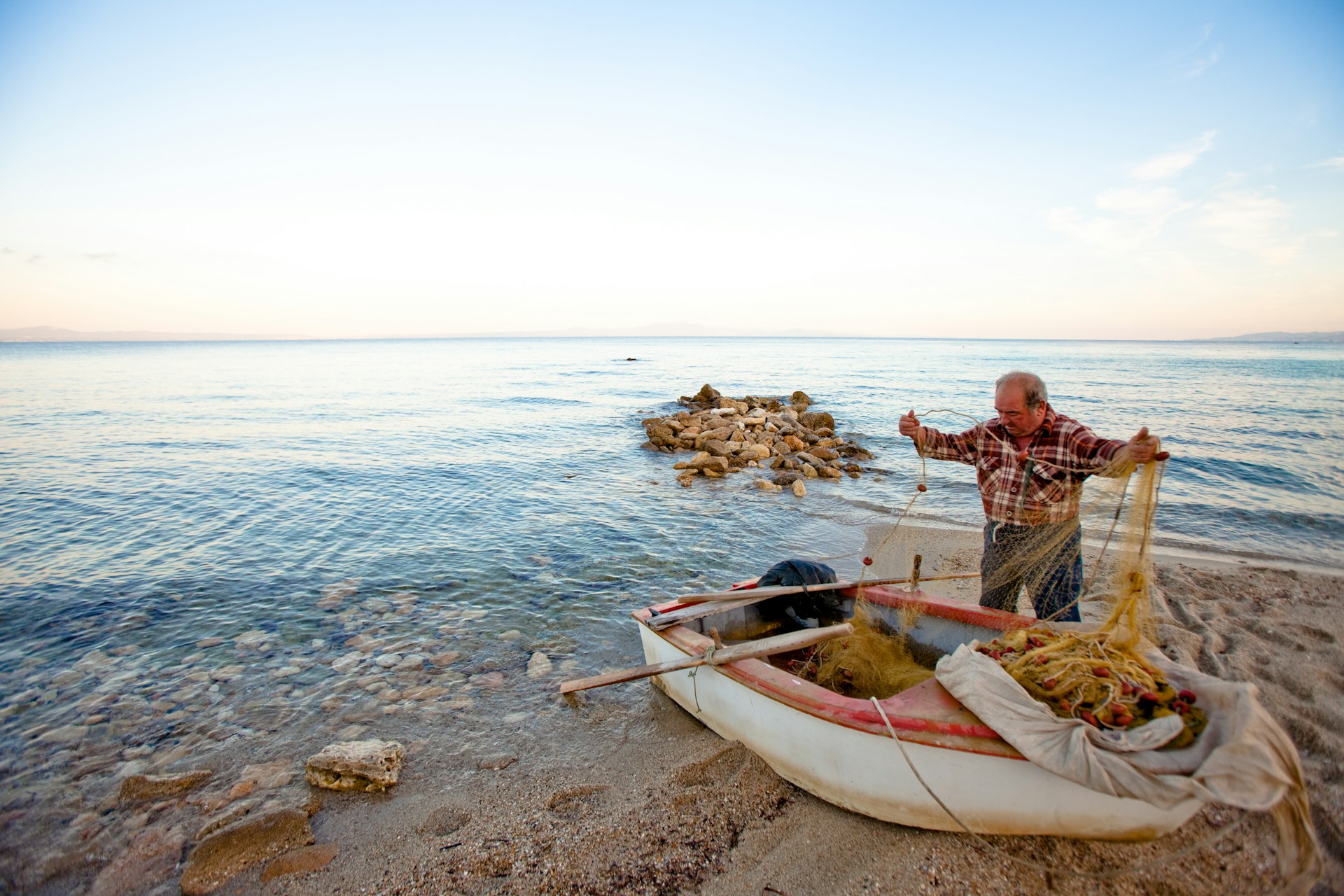
9. Thessaloniki, Greece
Thessaloniki has been known by many names — Salonica, Salonique, even SKG — but you may also know it by its more modern name Saloniki. As it sat on the Via Egnatia trade route between Rome and Asia, ancient Thessaloniki’s kitchens quickly folded spices such as pepper and cinnamon into their dishes as each culture, religion and people passed through — from Slavic shepherds to Sephardi Jews. Thessaloniki’s biggest influence was modern-day Turkey during the 1920s collapse of the Ottoman Empire. Dolmades, pastries and many taverna staples that now dominate menus can be traced back to this exodus.
In more recent years, however, all eyes were on Thessaloniki as it was designated Greece’s first City of Gastronomy by Unesco. The city sits at the gateway to other world cuisines, with Latin American, African and Asian restaurants joining in this melting pot of local taverna cuisine. Given the city’s compact nature, it’s easy (and excellent timing) to bounce between the markets, restaurants, bakeries, cafes, bars and wineries as Thessaloniki finds its way towards becoming a leading gastronomic city.
Where to eat
- Bougatsa Bantis Thessaloniki’s breakfast of choice is bougatsa (a piece of thick semolina custard between crunchy layers of filo). Bougatsa Bantis is one of a few bakeries to still make its own pastry thanks to third-generation bougatsa master Philippos Bantis.
- Agora Modiano 75 kiosks in Agora Modiano peddle everything from spicy soutzoukakia (Smyrna meatballs) to mountain tea from Crete. Head to Olicatessen, a honey, olive oil and organic store, to take part in a tasting where you’ll learn everything from proper hand warming, smelling and sipping (slurping) etiquette.
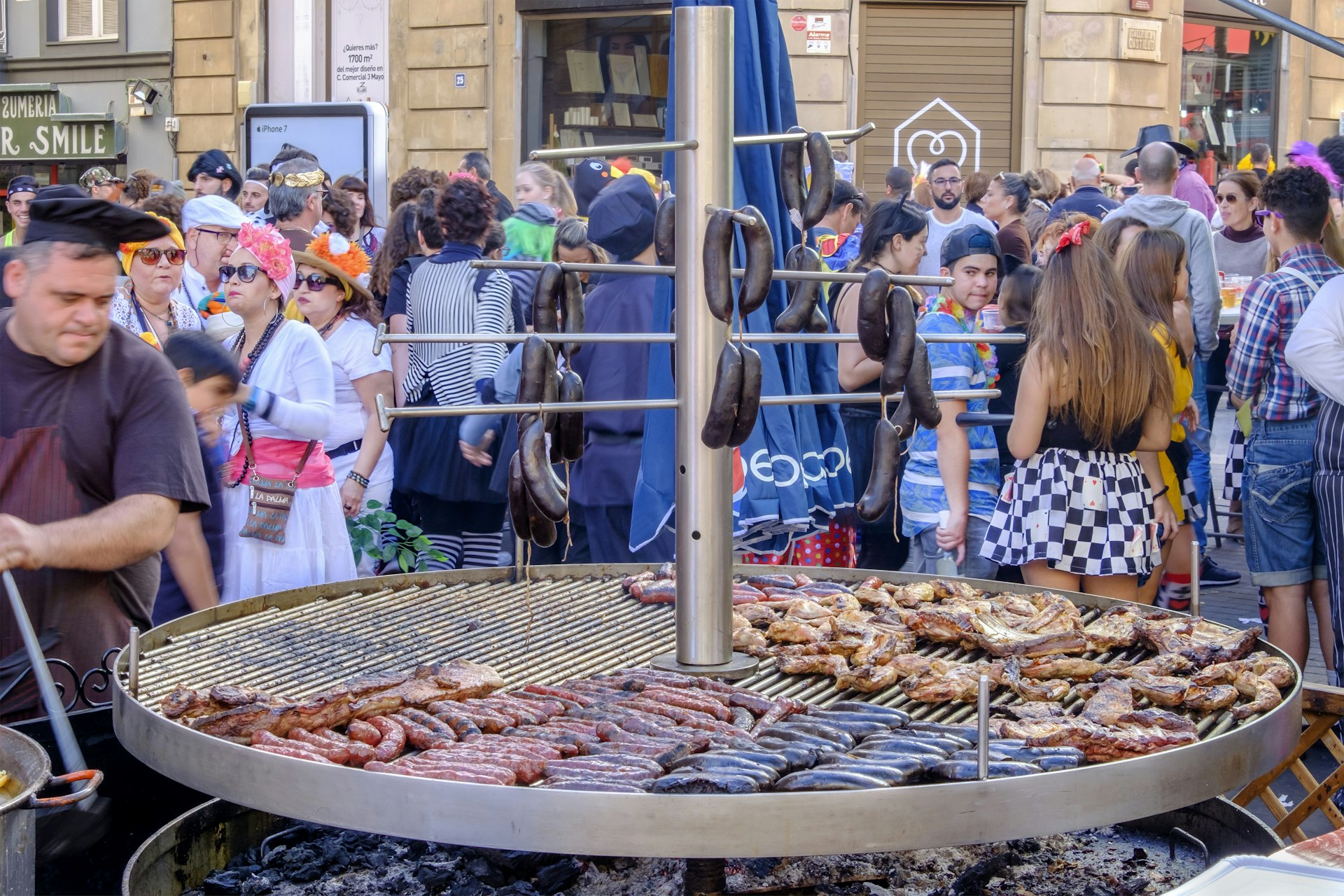
10. Tenerife, Spain
Tenerife is finding a stronger culinary foothold now that it embraces its culinary roots – a mix of Spain and Africa – with creativity and flair. Locally farmed and fished produce and imaginative tasting menus speak to the surrounding island and season, mountain and sea. It’s the freshly fished seafood and wines from volcanic vines that are the highlight here. And Tenerife’s subtropical microclimate is perfect for growing fruits you’ll rarely find elsewhere in Europe like bananas, mangoes, papayas, guavas, even coffee.
Make sure to try the highly addictive sauce mojo, made with bell peppers, garlic and cumin, coriander (in the green version) or chilies (the red version), best when drizzled over the local papas arrugadas, (wrinkly potatoes). Don’t ignore the island’s guachinches – one-pan pop-up restaurants that open for three months a year, where simple comida casera (home cooking) is paired with house wine.
Where to eat
- La Bola de Jorge Bosch La Bola de Jorge Bosch is an old-school restaurant in northeastern Tenerife that elevates the traditional guachinches. The menu is a feast of clean, bright, modern flavors like fish churros dunked in mango mayo and smoked goat cheese with mojo and gofio (roasted grain) crumble.
- Bodegas Monje The view from the terrace is breathtaking: vineyards spill neatly down lava-rippled slopes, a cloud-ringed Teide pops up on the horizon and there are views of the silky Atlantic beyond. The Monje family has been harvesting, pruning, fermenting and bottling here at Bodegas Monge since 1750. It’s a proper look at the wine-making process from start to finish, with guided tours of the vines and oak-barrel-lined cellars.
